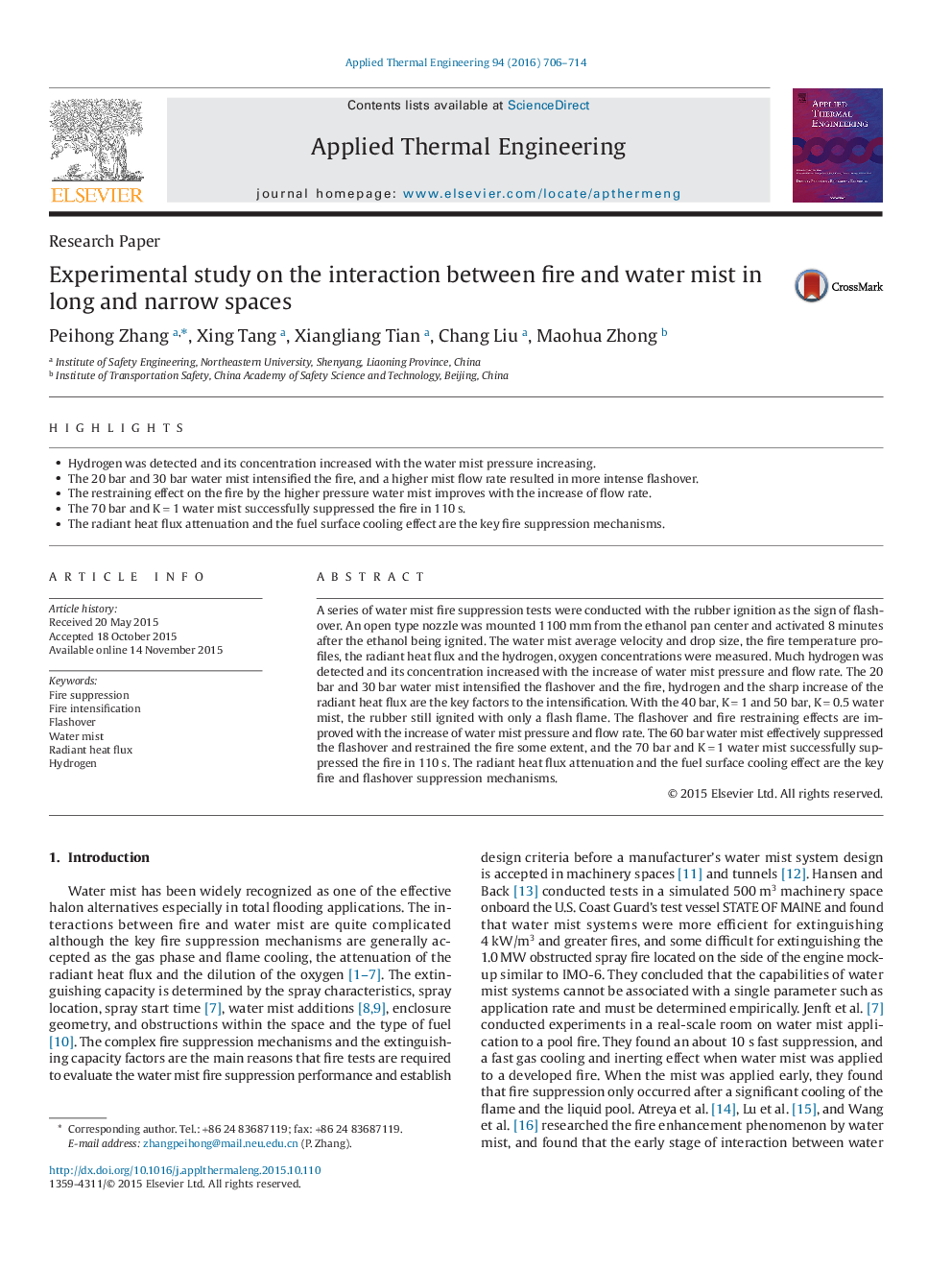| Article ID | Journal | Published Year | Pages | File Type |
|---|---|---|---|---|
| 644825 | Applied Thermal Engineering | 2016 | 9 Pages |
•Hydrogen was detected and its concentration increased with the water mist pressure increasing.•The 20 bar and 30 bar water mist intensified the fire, and a higher mist flow rate resulted in more intense flashover.•The restraining effect on the fire by the higher pressure water mist improves with the increase of flow rate.•The 70 bar and K = 1 water mist successfully suppressed the fire in 110 s.•The radiant heat flux attenuation and the fuel surface cooling effect are the key fire suppression mechanisms.
A series of water mist fire suppression tests were conducted with the rubber ignition as the sign of flashover. An open type nozzle was mounted 1100 mm from the ethanol pan center and activated 8 minutes after the ethanol being ignited. The water mist average velocity and drop size, the fire temperature profiles, the radiant heat flux and the hydrogen, oxygen concentrations were measured. Much hydrogen was detected and its concentration increased with the increase of water mist pressure and flow rate. The 20 bar and 30 bar water mist intensified the flashover and the fire, hydrogen and the sharp increase of the radiant heat flux are the key factors to the intensification. With the 40 bar, K = 1 and 50 bar, K = 0.5 water mist, the rubber still ignited with only a flash flame. The flashover and fire restraining effects are improved with the increase of water mist pressure and flow rate. The 60 bar water mist effectively suppressed the flashover and restrained the fire some extent, and the 70 bar and K = 1 water mist successfully suppressed the fire in 110 s. The radiant heat flux attenuation and the fuel surface cooling effect are the key fire and flashover suppression mechanisms.
